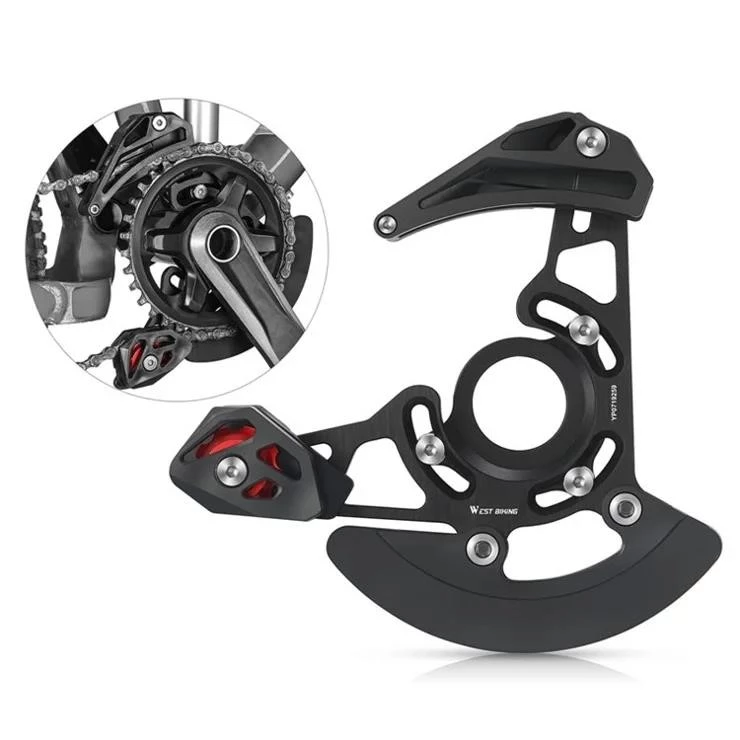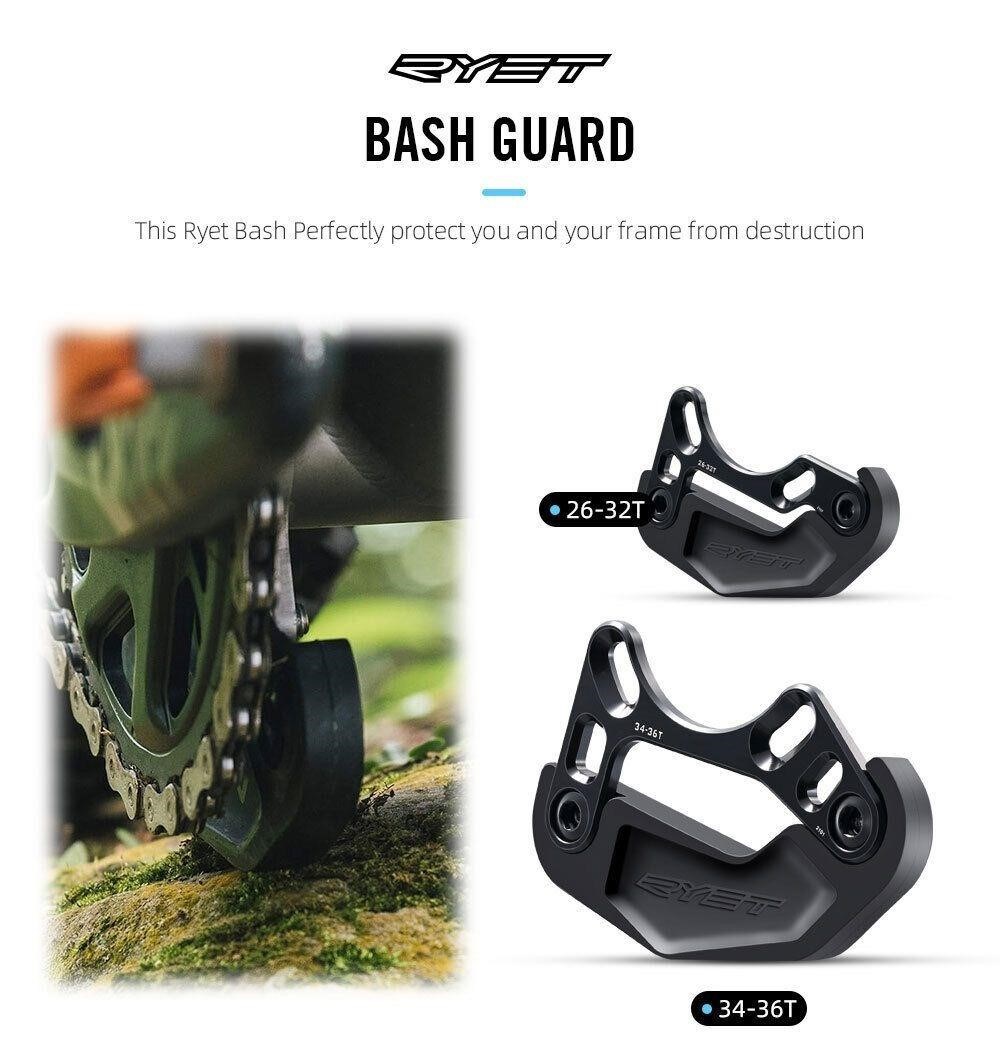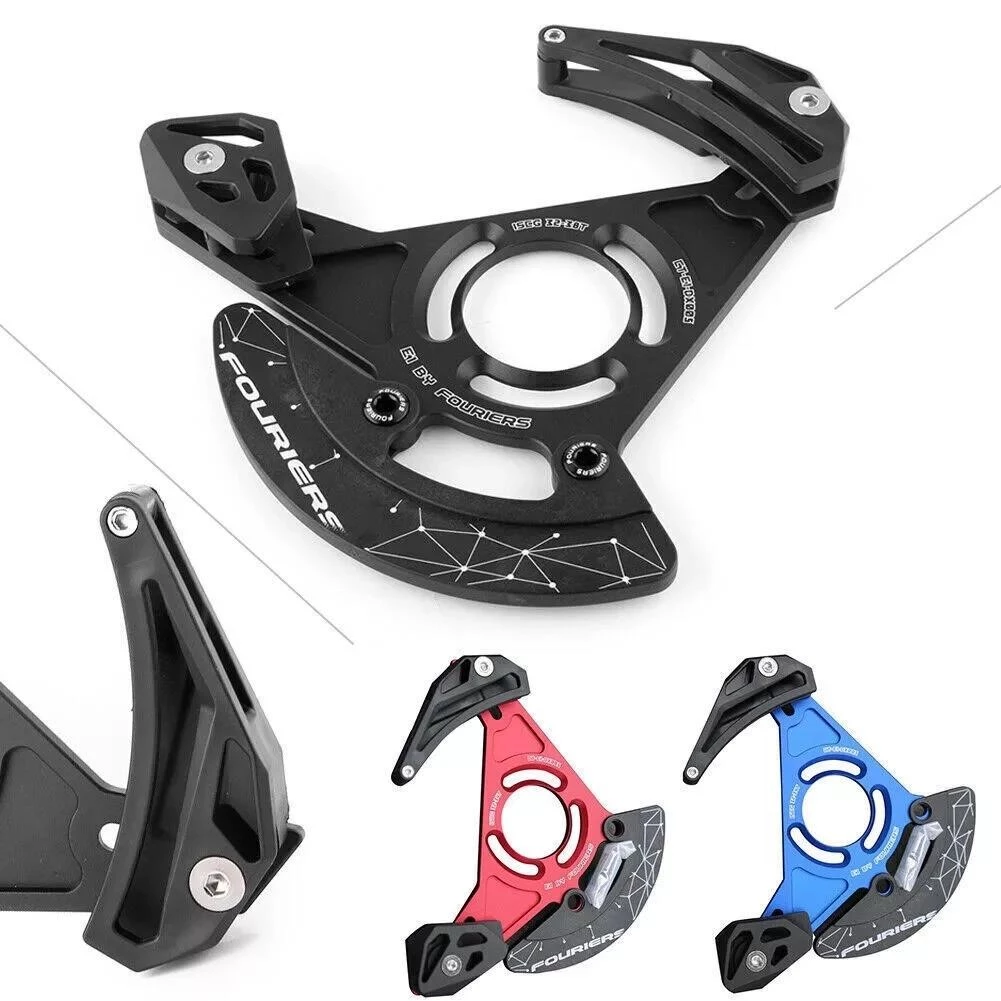Chain Guide and Bash Guard⁚ A Comprehensive Overview
Chain guides and bash guards are essential components for mountain bikers seeking enhanced drivetrain protection and performance. They prevent chain drops and safeguard chainrings from trail debris. This guide explores their types, benefits, and maintenance.
Types of Chain Guides and Bash Guards
Chain guides are categorized by mounting style⁚ ISCG05 (International Standard Chain Guide), direct mount, and high-direct mount, each offering varying degrees of compatibility with different frame designs. Bash guards, primarily designed for chainring protection, come in various materials like aluminum or polycarbonate, and often integrate with chain guides. Some are designed specifically for oval chainrings. Top-mounted guides offer simplicity and lighter weight, while full chain guides provide more robust chain retention. The choice depends on riding style and bike setup; some integrate both functions into one unit, offering a combined solution for maximum protection.
Choosing the Right Chain Guide for Your Riding Style
The ideal chain guide depends heavily on your riding style and terrain. Aggressive trail riders and enduro enthusiasts often benefit from full chain guides offering superior chain retention, even on challenging descents and rough terrain. Cross-country riders, prioritizing lightweight setups, might prefer a simpler top guide. For riders frequently encountering rock strikes, a robust bash guard is crucial, regardless of guide type. Consider the chainring size; guides have compatibility limitations. If you ride predominantly on smoother trails with less risk of chain drops, a bash guard might suffice. Assessing your needs and riding style ensures you select a system providing sufficient protection without unnecessary weight or complexity.
Installation and Compatibility
Installation methods vary depending on the guide’s design. ISCG (International Standard Chain Guide) mounts are common, requiring frame-specific tabs. Some guides utilize direct-mount systems, attaching directly to the crankset. Others employ a seat tube clamp for simpler installation. Always check compatibility with your specific crankset, bottom bracket, and chainring size. The provided hardware should be suitable, but using a torque wrench is crucial to prevent damage. Consult the manufacturer’s instructions for precise alignment and tightening specifications. Improper installation can lead to poor performance or even damage to the frame or drivetrain components. Ensure correct chainline for optimal shifting and chain retention.
Benefits of Using a Chain Guide and Bash Guard
A chain guide prevents frustrating chain drops, especially on rough terrain or during aggressive riding, ensuring consistent pedaling. Bash guards protect your expensive chainring from rock strikes and other trail hazards, reducing costly repairs or replacements. The combination significantly improves drivetrain reliability. While a clutch derailleur helps, a chain guide provides additional security, especially on technical trails. This enhanced security leads to improved shifting performance, particularly during impacts, keeping the chain engaged. The overall result is a more confident and enjoyable riding experience, minimizing interruptions and maximizing trail time. The added peace of mind is invaluable for riders tackling demanding terrain.
Maintaining Your Chain Guide and Bash Guard
Regular cleaning and lubrication are crucial for optimal performance and longevity. Inspect for wear and tear, addressing any issues promptly to prevent more significant problems.
Cleaning and Lubrication
Regular cleaning is vital to maintain your chain guide and bash guard’s efficiency. Use a degreaser to remove built-up grime, paying close attention to the moving parts of the guide. Thoroughly rinse with water and allow to dry completely before applying lubricant. A light coating of chain lube on the guide’s moving parts will reduce friction and ensure smooth operation. For the bash guard, simply wipe away any mud or debris. Avoid using harsh chemicals that could damage the plastic or composite materials. Consistent cleaning will extend the lifespan of your components and prevent premature wear. Remember to check for any damage during cleaning and replace parts as necessary. This preventative maintenance will keep your drivetrain running smoothly for many rides to come. Proper lubrication is key to preventing squeaking and ensuring the guide functions correctly.
Troubleshooting Common Issues
Chain drop issues often stem from incorrect chain guide alignment or wear. Check for proper installation and adjustment according to the manufacturer’s instructions. A worn or damaged chain guide may require replacement. If the chain continues to drop, inspect the chainring for damage or wear, and consider replacing it if necessary. Noise from the chain guide might indicate excessive friction; clean and lubricate the moving parts. If the bash guard is hitting the frame or crank, there might be a misalignment or interference issue. Review the installation and ensure proper spacing. Bent or damaged bash guard components should be replaced. Persistent problems may require professional bike shop assistance for diagnosis and repair. Regular maintenance and inspection can help avoid many common issues and keep your chain guide and bash guard running smoothly.

Popular Brands and Models
OneUp Components, E*thirteen, and MRP are leading brands offering high-quality chain guides and bash guards with various models to suit different riding styles and budgets.
OneUp Components
OneUp Components is frequently praised for its lightweight yet robust chain guides and bash guards. Their V2 Chainguide/bashguard system receives considerable positive feedback for its effectiveness in preventing chain drops and protecting chainrings. Reviewers highlight the system’s rigidity and light weight as key advantages. The compatibility with a range of chainring sizes, including oval rings, is a significant benefit. Many users appreciate the ease of installation and the overall reliability of OneUp’s products, citing them as a worthwhile investment for serious mountain bikers. The modular design, allowing for independent use of the guide and bash guard, adds to its versatility and user-friendliness. OneUp’s reputation for quality and performance makes their products a popular choice among riders seeking dependable chain retention.
Ethirteen
Ethirteen, with over two decades of experience, is a prominent manufacturer of high-quality chain guides for mountain bikes. Their LG1 chain guide, often paired with a bash guard, is frequently mentioned in online reviews and discussions. The company emphasizes superior protection and retention capabilities while maintaining affordability. While specific details on bash guard integration vary by model, E*thirteen’s guides are known for their robust construction and reliable performance in demanding riding conditions. Users often commend the effectiveness of their designs in preventing chain drops and protecting the drivetrain from damage. Their products are generally considered durable and easy to install, contributing to their popularity among mountain bikers seeking reliable chain management solutions. The brand’s focus on engineering and design contributes to a reputation for dependable performance.
MRP
MRP (Motorcycle Repair Parts) is another well-regarded brand in the mountain bike component market, known for its innovative chain guides and bash guards. Their AMg chain guide, frequently reviewed, receives praise for refinements in its upper guide and bash guard design. MRP products are often noted for their durable construction and effective protection of chainrings from rock strikes and other trail hazards. The company’s focus on performance and reliability is apparent in user feedback, which often highlights the effectiveness of MRP’s systems in preventing chain drops, even during aggressive riding. While specific models and features vary, MRP consistently receives positive comments regarding the quality and performance of its chain guide and bash guard offerings, making them a popular choice among riders seeking robust and dependable components. Their XCg line of bashguards is specifically mentioned for its neat design and effective protection.

Frequently Asked Questions
This section addresses common queries regarding chain guides and bash guards, covering their necessity, selection, and cost-effectiveness for various riding styles and trail conditions.
Are chain guides worth it?
Whether a chain guide is worthwhile depends heavily on your riding style and terrain. For aggressive trail riding or enduro, where chain drops are frequent and chainring damage is a risk, a chain guide offers significant benefits. The added security outweighs the minimal weight penalty. However, for smoother XC trails, a chain guide might be unnecessary, especially with a modern clutch derailleur. The increased cost and added weight might not be justified if chain drops are infrequent. Consider the frequency of chain issues and the potential for costly repairs when making your decision. Many riders find the peace of mind and improved shifting performance worth the investment, particularly in challenging conditions. Ultimately, the value proposition hinges on individual riding habits and preferences.
How to choose the correct chain for MTB?
Selecting the right chain for your mountain bike is crucial for optimal drivetrain performance and longevity. First, determine your drivetrain’s speed; this is usually clearly marked on your cassette (e.g., 10-speed, 12-speed). The chain must match this speed precisely; using an incompatible chain will lead to poor shifting and potential damage. Most modern mountain bikes utilize 10, 11, or 12-speed drivetrains. The chain’s length is also important; it should be long enough to accommodate all gears without excessive slack but not so long as to cause interference. Precise chain length is critical for efficient shifting and to avoid derailing. Many resources are available online to guide you through proper chain measurement and installation for your specific bike model.
